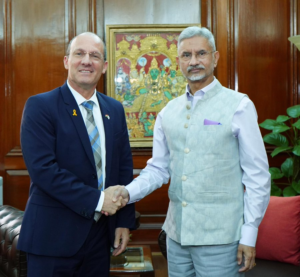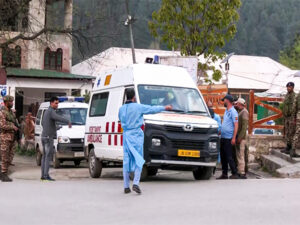Mediterranean has become graveyard of desperate refugees, victims of smugglers
By John Solomou
Nicosia [Cyprus], June 19 (ANI): Since 2014 the Mediterranean Sea has become the most dangerous crossing in the world and the graveyard of desperate refugees and would-be migrants with more than 20,000 deaths and disappearances.
This ugly truth was confirmed last Wednesday when a fishing boat trying to travel from Libya to Italy and carrying between 400 -750 people capsized and sank about 80 km from the Greek coastal town of Pylos.
Rescuers saved 104 passengers and recovered 79 bodies. The final death toll, including an unknown number of women and children believed to be trapped below deck may never be known, as the spot where the boat capsized is one of the deepest in the Mediterranean. Most of the people on board were from Libya, Egypt, Syria and Pakistan.
An official of the Greek Shipping Ministry said that nine people believed to be smugglers were arrested in connection with the tragedy. The Greek Government blamed international smuggling networks for putting the lives of desperate migrants and refugees at risk.
Wednesday’s accident is believed to be the worst such accident in recent memory in the Mediterranean. The International Organization for Migration (IOM) has estimated that 441 persons died in the Mediterranean in the first quarter of 2023, making it the deadliest first quarter since 2017.
According to Frontex- the European Border and Coast Guard Agency- nearly 80,700 irregular crossings were detected along the route in the first four months of the year — the highest since record-keeping began in 2009.
Filippo Grandi, the UN High Commissioner for Refugees, called on governments to work together to create safe pathways for people fleeing poverty and war.
The director of IOM’s Department of Emergencies Federico Soda stresses that “the Central Mediterranean route continues to be the most dangerous migration route in the world, with the highest fatality rate. States need to come together and address the gaps in proactive search and rescue, quick disembarkation, and safe regular pathways.”
Europe has been facing an unprecedented migration crisis in terms of the number of migrants arriving in Europe and in the level of involvement of complex and ruthless migrant smuggling networks, which change all the time their routes and modus operandi. This makes their monitoring by the coast guards and police authorities extremely hard.
In March 2020 the EU launched a military operation called “Irini” aimed at combating trafficking networks and human smuggling and disrupting the business model of such networks through information gathering and patrolling with planes.
From May 2015 to March 2020, Operation Sophia -the predecessor of Operation Irini- succeeded in arresting 43 suspected smugglers, destroying 545 boats and also training 477 Libyan coast guards.
According to Europol and Interpol, illegal migrants usually pay smugglers between US$ 3000-7000 to try to reach Europe. It is a highly lucrative business, believed to generate between US$ 3 to 6 billion a year for criminal networks, while there is a low risk of getting caught.
Smuggling desperate and vulnerable migrants and refugees who want to escape war zones, or who are facing political or religious persecution, or trying to avoid deprivation, is a very profitable business for criminal networks. Smugglers or “facilitators” provide fake documents, accommodation and transportation usually in completely unsuitable and overcrowded vessels.
Migrant smuggling should not be confused with human trafficking. Migrant smuggling is a crime that takes place only across borders and mainly involves assisting migrants to enter or stay in a country illegally, for financial or material gain. Since migrants give their consent to the smuggling venture (often in dangerous sea crossings) they are not considered victims in absolute terms.
Human trafficking can take place within a country or across borders. It involves the recruitment, movement or harbouring of people for the purpose of exploitation – such as sexual exploitation, forced labour, slavery or organ removal and usually involves threats or use of force, deception, fraud or abuse of power.
Smugglers mainly use ports in Turkey, Libya and Egypt to smuggle refugees and migrants under dangerous, unsafe and inhumane travelling conditions.
Former Europol Director Rob Wainwright Europe pointed out that “organised crime networks are profiting from mass migration. Migrant smuggling networks have proven flexible and resilient, adapting to law enforcement action by quickly changing the routes used to smuggle migrants to the EU.”
The European Migrant Smuggling Centre (EMSC) in its annual report for 2022 says that “a complex, ruthless and multinational migrant-smuggling network has developed around Europe’s unprecedented migration crisis, thus generating billions of euros for the criminal groups involved. The facilitation of illegal immigration has had a profound impact on Europe’s criminal landscape, with criminal networks substantially increasing their involvement in migrant smuggling.”






